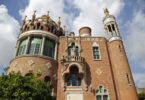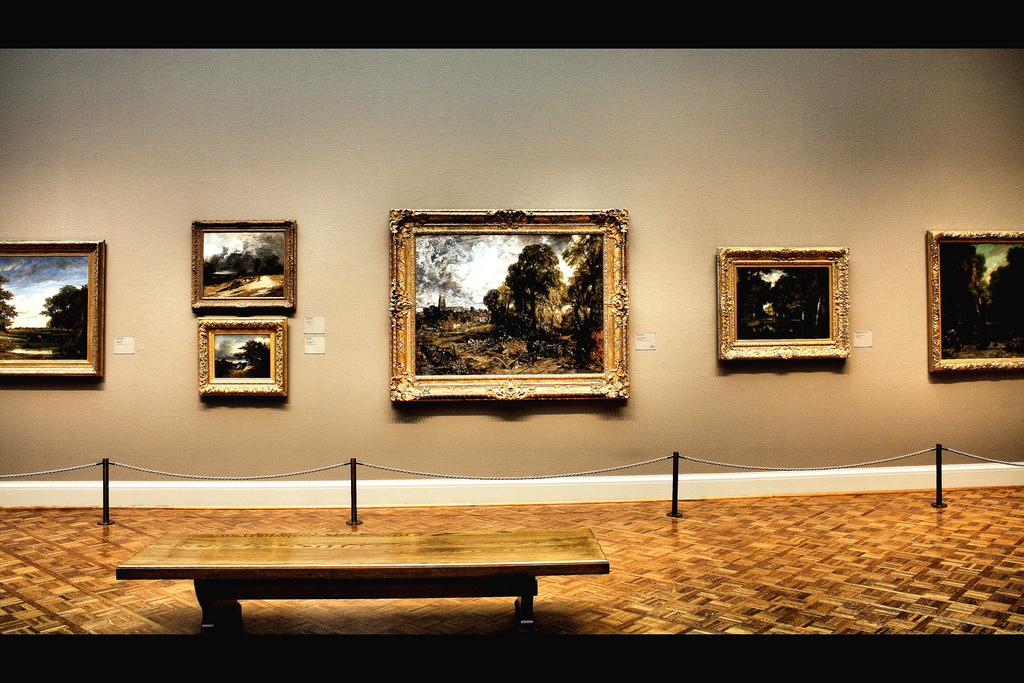The one building which, above all others, symbolizes modern-day Barcelona is undoubtedly Gaudí’s inimitable masterpiece, the Temple Expiatori de la Sagrada Família. The architect knew when he started work on the temple that it would take many years to complete it and that he would not see the church finished in his lifetime, but he was a devoutly religious man who regarded its construction as an act of divine worship. What he may not have anticipated, however, were the decades of political upheaval which would constitute a challenge and threat to the completion of the project as he had envisioned it.
Related article: Eusebi Guell: Gaudì’s friend and patron
Table of Contents
Gaudi’s Sagrada Família



Photo via Pixabay
Construction of the church was originally begun by the architect Francisco de Paula del Villar in 1882, to a traditional Gothic revival model. When Villar resigned from the project only a year later, it was taken over by Gaudí, who envisioned a temple on a grand scale which would symbolize the Holy Family (Sagrada Família) of Jesus, the Virgin Mary and St Joseph along with the Evangelists and Apostles. According to his vision, the completed church was to have 18 towers representing the Virgin Mary, 12 Apostles, 4 Evangelists and the tallest tower (at 170m) representing Christ, in the center. Though he was inspired by the Gothic churches of Catalonia, he adapted his unique brand of architecture to fit this medium in a manner never seen before in the construction of a place of worship.
The parts of the temple belonging to Gaudí’s lifetime are the crypt, the apse, and the stunning Nativity Façade. In studying these sections of the church, we see his genius at work: naturalistic forms merging with Gothic tradition to create a tableau which is somehow beyond architecture, and almost beyond nature itself.
The church of today



Photo via Pixabay
Construction of the church was interrupted by the onset of Civil War in 1936. This would have massive implications for the future of the building as Gaudí’s plans were destroyed and his models damaged by the fires of the Anarchists. After the war, the architect Francesc de Paula Quintana i Vidal repaired the models which, along with Gaudí’s surviving drawings, have been used as the basis for the design of the newer parts of the temple. These models are by no means as exact as the detailed plans which Gaudí had intended to be used in the continued construction of the basilica, and as a result, much has been left open to interpretation.
Construction work continued intermittently following the Civil War, with the Passion Façade being completed in 1976. It marks a striking contrast to the Nativity Façade, with its bone-like entrance which was conceived by Gaudí to represent Christ’s suffering. The design of this entrance was based on Gaudí’s surviving sketches, which are now displayed in the church’s museum. The most controversial aspect of this façade is the sculptural decoration, which was undertaken by contemporary sculptor Josep Subirachs. Subirachs refused to attempt an imitation of Gaudí’s style, bringing instead his own characteristic brand of sculpture to the project. In the absence of Gaudí’s plans, this was perhaps the best way to preserve ‘the spirit of the work‘ as Gaudí himself had wished: any attempt at imitating his unique style of sculpture would likely have failed.
Completion of the external building is planned for 2026, which will be the centenary of Gaudí’s death. As a work in progress, it is a hive of activity, and a wonder to witness. Even in its present form, the basilica is without rival or counterpart anywhere in the world. Once complete, it will have a magnificent Glory Façade and 18 towers, the highest of which will make it the tallest church building in the world. We can see the spirit of Gaudí’s plans in action today despite the many challenges that have beset its construction.
Related article: Discover the modern Torre Bellesguard in Barcelona
Visiting the Sagrada Família – Ticket prices



Photo via Pixabay
If you are visiting Barcelona for the first time or even if you have been here before, it is definitely worth it to pay a visit to this magnificent monument, one of the many by Gaudí to have been declared a UNESCO World Heritage Site.
If you can, buy your tickets online beforehand, which is cheaper than buying the tickets on site. Adults pay 15€ online or 18€ at the ticket office, retirees pay 11€ or 14€, and students pay 13€ or 16€. Children under 11 years old can go in for free. The price of this ticket does not include a visit to the towers or a guided tour.
There are guided tours available for 24€ online or 29€ at the ticket office for adults, 18€ or 23€ for retirees, and 22€ or 27€ for students. The guided tours are given in Catalan, Spanish, English, French, Italian or German.
If you prefer to visit the basilica with an audio guide rather than a tour guide, the prices are a little lower, costing 22€ online or 26€ at the ticket office for adults, 17€ or 21€ for retirees, and 20€ or 24€ for students. There are audio guides in the same languages the guided tours are given in, plus Portuguese, Russian, Chinese and Japanese.
If you want a complete visit to Sagrada Família, which includes going up to the towers, the prices are 29€ online or 35€ at the ticket office for adults, 22€ or 28€ for retirees, and 27€ or 33€ for students. This visit includes an audioguide. Do check online before purchasing a ticket that includes visiting the towers, as they are sometimes closed to the public for construction work.
Working hours of the Sagrada Família
The working hours of the Sagrada Família are as follows:



Photo via Pixabay
November to February – 9 am to 6 pm
March – 9 am to 7 pm
April to September – 9 am to 8 pm
October – 9 am to 7 pm
25 and 26 of December and 1 and 6 of January – 9 am to 2 pm
How to get to the Sagrada Família
The Sagrada Família is located in the neighborhood with the same name, at Carrer de Mallorca, 401. The easiest way to get there is by using the purple (L2) or blue (L5) line of the metro, exiting at “Sagrada Familia”. You can also get there using buses number 19, 33, 34, 43, 44, 50, 51, B20, and B24.
Looking for an apartment in the city? ShBarcelona is the answer.





















Leave a Comment